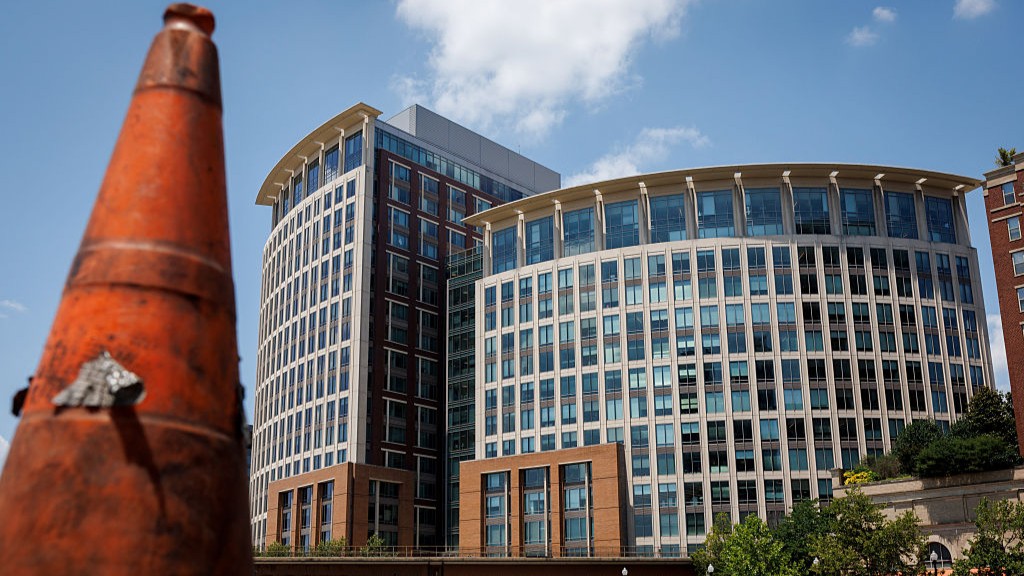NASA to Adjust SOFIA Flying Telescope's Operations to Improve Productivity

ST. LOUIS — NASA plans to adjust operations of an airborne astronomical observatory in order to increase its scientific productivity.
In a town hall presentation at the 234th Meeting of the American Astronomical Society here June 10, Paul Hertz, director of NASA's astrophysics division, said those upcoming changes are the outcome of a pair of reviews of the Stratospheric Observatory for Infrared Astronomy (SOFIA), a Boeing 747 equipped with a 2.5-meter telescope for high-altitude infrared observations.
"We will be making changes in the SOFIA project to improve its productivity and make it as responsive as it can be to community science priorities," he said.
Related: Photos from SOFIA, NASA's Flying Telescope
Among the changes, he said, will be for SOFIA to fly more frequently. Those flights will also be designed to spend more time at high altitudes, where the plane is above most of the infrared-absorbing water vapor in the atmosphere, enabling observations not possible from ground-based observatories.
"We're going to complete the transition of SOFIA from a developmental mindset into an operational mindset that we anticipate will create a more productive science operations mode," Hertz said.
SOFIA is one of NASA's largest operational astrophysics projects, receiving $85.2 million in fiscal year 2018; funding for fiscal year 2019 is pending approval of the agency's operating plan. NASA requested $73 million for SOFIA in its fiscal year 2020 budget proposal, although the House version of a commerce, justice and science spending bill released in May increased funding for the project to the 2018 level of $85.2 million.
Breaking space news, the latest updates on rocket launches, skywatching events and more!
SOFIA, formally declared operational in 2014, completed its original five-year prime mission in 2019 and would have been included in this year's astrophysics senior review. However, language in the fiscal year 2018 appropriations act directed NASA not to spend any money preparing SOFIA for the senior review.
NASA elected to instead perform a pair of reviews of SOFIA, one focused on the maintenance and operations of the airborne observatory and the other on its science. NASA has completed both reviews, Hertz said, which informed the operational changes planned for it. The specifics of implementing those changes are still being worked out, he said after the town hall meeting.
The Universities Space Research Association (USRA), which manages SOFIA science operations, is also awaiting those details. "We know that they are proposing to increase the scientific productivity but we don't know how these changes will affect SOFIA operations," USRA spokesperson Suraiya Farukhi said June 12.
Another mission excluded from the astrophysics senior review is the Spitzer Space Telescope, one of NASA's original "Great Observatories" launched in 2003. NASA had long planned to wind down operations of the spacecraft, citing its age and increasing distance from the Earth in its orbit around the sun that affects communications and spacecraft operations.
However, it was only last month that the Spitzer project announced its "Final Voyage" phase of the mission, which will formally end Jan. 30, 2020. "Spitzer's prime mission lasted more than twice the requirement, and I can assert with confidence that no one expected that the observatory would still be operating and doing exciting science in 2019, the tenth year of the extended mission," wrote Lisa Storrie-Lombardi, Spitzer project manager, in a May 14 blog post.
NASA considered extending Spitzer's mission by a year by handing over operations of the spacecraft to another organization, which would also be responsible for funding. Two organizations submitted proposals for doing so, NASA spokesperson Felicia Chou said May 22, but neither could secure the funding required. She said NASA could not disclose the names of those organizations. NASA spent $11.2 million on Spitzer in fiscal year 2018.
Hertz said at the town hall meeting that NASA is wrapping up the senior review of other astrophysics missions. Those missions include two large observatories, Hubble and Chandra, and several smaller missions: Fermi, Neutron star Interior Composition Explorer (NICER), Nuclear Spectroscopic Telescope Array (NuSTAR), Neil Gehrels Swift Observatory, Transiting Exoplanet Survey Satellite (TESS) and NASA's participation on Europe's XMM-Newton mission.
"We're in the final stages of the senior review," he said, with the final step being for the senior review subcommittee to report to the Astrophysics Advisory Committee, who will then provide it to NASA for the agency to make decisions regarding whether and how to extend those missions. He said those decisions should be announced some time in July.
- Read SpaceNews for the Latest Space Industry News
- Now You Can 3D-Print a NASA SOFIA Flying Telescope of Your Very Own!
- How NASA's Flying Observatory Revealed Secrets About Pluto
This story was provided by SpaceNews, dedicated to covering all aspects of the space industry.
Join our Space Forums to keep talking space on the latest missions, night sky and more! And if you have a news tip, correction or comment, let us know at: community@space.com.

Jeff Foust is a Senior Staff Writer at SpaceNews, a space industry news magazine and website, where he writes about space policy, commercial spaceflight and other aerospace industry topics. Jeff has a Ph.D. in planetary sciences from the Massachusetts Institute of Technology and earned a bachelor's degree in geophysics and planetary science from the California Institute of Technology. You can see Jeff's latest projects by following him on Twitter.

